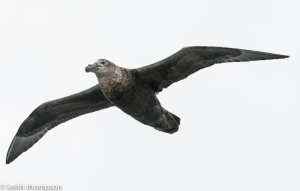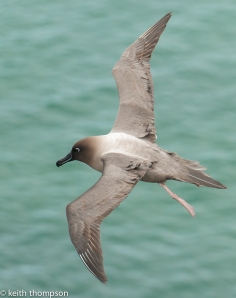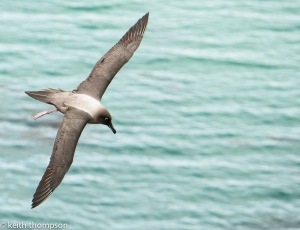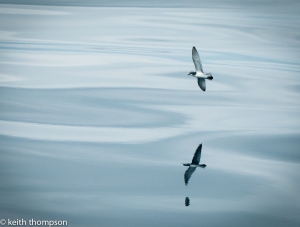I wrote previously about my mild obsession of photographing birds in flight. Particularly sea birds flying over the ocean. Shooting Prions, Albatross and Petrels soaring over the southern ocean from the bow of a ship is exciting and challenging. I have thousands of images of birds in flight but only a handful that are worthwhile. Capturing pin sharp images of flying birds from the rail of a moving ship on a stormy sea is very difficult.
My goal is to get the sharpest image possible. I want to photograph the bird in a banking turn to capture the entire upper or lower surface of the bird to show off detail and patterns in the feathers with the head turned slightly and at least one eye visible. If I am shooting with the ocean as my back ground I try to include a cresting wave to show the drama and motion of the life of a sea bird. With the sky as background I slightly over expose the shot to pull the bird out of the background and open up the shadows on the bird created by the highlights in the sky.
There are probably lots of ways to increase you chances of success. This is how I do it, or at least how I try to do it. If anyone has suggestions on techniques I would love to hear about it:
First I watch. I stand on the bow of the ship or on the shore and spend ten or fifteen minutes observing . Each species has its own technique and generally fly in a patten that is somewhat dictated by the speed and direction of the wind and also the waves when at sea.
Once I have a general idea of what species I will be shooting and the direction of the wind and the birds flight pattern around my position I set a few camera functions that help maximize my ability to focus on the moving bird.
I shoot on aperture priority and I find in most cases a shutter speed of at least 1/1250 is necessary to freeze motion, which means I am almost always shooting at iso 400. I rarely go higher than iso 400, for me the pixel grain is too obvious. I try to have as small an aperture as possible. My largest lens is 200mm and at f7 or less if your auto focus locks on the wing the eye of the bird will be soft and for me the eye has to be sharp. I think f8 is best but I am often forced to shoot at f5.6 or less to keep the shutter speed over 1/1250.
I lock my focal point in the center and have nine points active, I set my autofocus on continuous. Then I choose one bird to focus on and observe. When I have an idea of its flight pattern I lock my autofocus on it and pan with it until it flies into position and I fire. Sometimes I shoot on burst and sometimes I try and capture one image at just the right moment, it depends on my mood and what species I am shooting, the windspeed and the wave height.
On rare occasions the ocean is glassy calm and capturing the flight of the bird and its reflection mirrored on the sea surface is possible, these are some the most coveted images.
Here are some examples from the last two weeks and my most previous voyage to South Georgia Island and the Antarctic continent.




